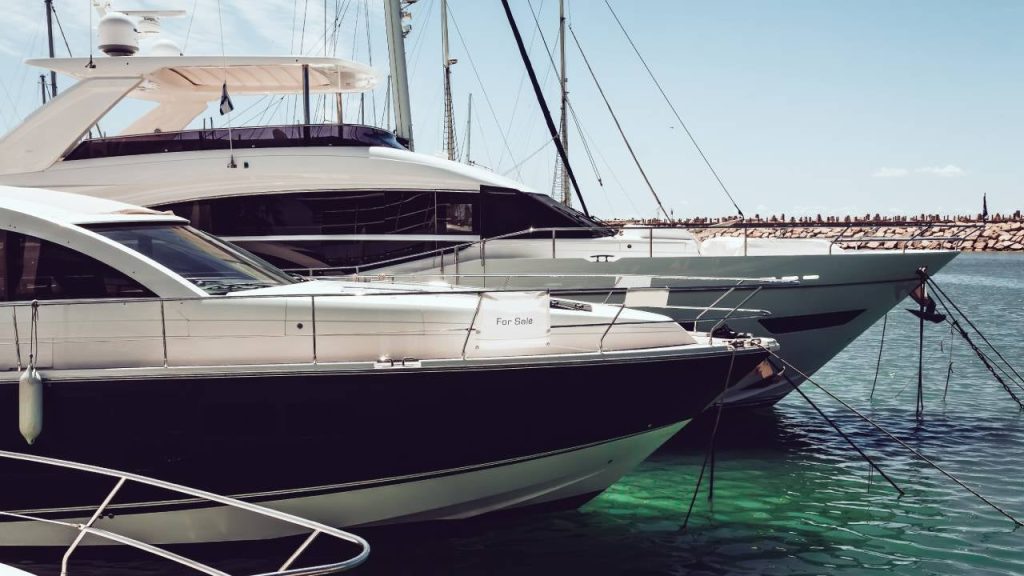Key takeaways
- Your credit score, current debts and income will all influence how much boat loan you can afford.
- Use a boat loan calculator or prequalify with multiple lenders to get a grasp on your ideal price range without hurting your credit.
- Factor in maintenance costs, insurance, taxes and other ownership costs to further understand what’s within your budget.
Boats are luxury purchases that can be hard to fit into a budget. You can expect a mid-to-lower range new vessel to cost anywhere between $15,000 to $75,000, while a newer, more luxurious model can cost more than $100,000.
And the costs of boat ownership go beyond purchasing the vessel. You’ll need to factor in expenses like maintenance costs, insurance, registration fees and taxes to know how much buying a boat will actually cost you.
Can I afford to buy a boat? How to find out
You can find used boats for less than $10,000. On average, new ones cost upwards of $40,000. Though buying your boat with cash may be possible, saving for it can be hard. Many owners instead take out a boat loan to finance their purchase.
Before committing to a particular model, make sure the monthly payments fit reasonably into your current — and future — budget.
Step 1: Check your credit score
Just like with any other loan, your credit score plays a key role when getting a boat loan. Most lenders use your score to determine your approval odds and interest rate. Because your credit score indicates how risky of a borrower you could be, the higher it is, the more affordable your loan will be.
Typically, you’ll need a FICO credit score of 670 or better to qualify for a boat loan with favorable terms. Some lenders may accept a credit score below that threshold. However, you’ll pay more in interest and fees, which can result in a higher monthly payment. Borrowers with excellent credit are likelier to get loans with low interest rates and fees.
Knowing your score before you start shopping will help you narrow your options down, can save you time in your lender search and may reduce your chances of getting denied.
Some banks, credit cards and financial apps allow you to view your score for free as part of their member benefits. You can also download a free copy of your credit report each week by visiting AnnualCreditReport.com. Though these copies won’t include your score, they will list your repayment and account history.
Since lenders don’t like to see multiple missed payments or negative marks, accessing your report will give you an idea of whether it’s a good time to apply or if you should improve your credit first.
Step 2: Calculate your debt-to-income ratio
Your debt-to-income ratio — or DTI — is a figure that lenders use when determining eligibility. Your DTI is how much debt you have relative to your income, represented as a percentage. Lenders use this percentage to measure how likely you are to default on your balance.
Lenders typically prefer a DTI of 36 percent and under. Though some lenders may accept higher thresholds, anything above 50 percent is usually considered too risky.
To calculate your DTI, add up all of your monthly debt payments and divide that number by your monthly gross income. Alternatively, you can use a DTI calculator to help you crunch the numbers. If your DTI is high and you don’t need the cash immediately, consider paying off some of your debt. This is the quickest way to lower this figure and boost your chances of approval.
Step 3: Figure out your monthly payment
If your credit score and DTI make the cut, the next step is determining how much you can borrow. You can do this by using a boat loan calculator or getting prequalified with multiple lenders.
With a boat loan calculator, you can tinker with the loan amount, interest rate and length of the repayment term to get an estimated payment that works for your budget.
Prequalifying with multiple lenders, however, is the best way to get a firm grasp of what your loan terms could look like. When available, prequalification allows you to compare predicted offers before applying, but keep in mind that the offers aren’t guaranteed.
When calculating what a reasonable loan payment could look like for your budget, use your DTI as a reference. Make sure adding the payment would not push you above the DTI threshold lenders accept.
Step 4: Factor in outgoing costs
Buying a boat is similar to getting a car, an RV or another vehicle. You’ll have to factor in yearly maintenance costs and boat insurance when determining how much you can afford —not just your monthly payment.
You can expect to spend about 10 percent of the cost of the boat on maintenance alone. So, if you have a $35,000 boat, that translates to an added $3,500 a year. And don’t forget boat insurance. Annual costs average about 1.5 percent of the boat’s insured value.
Other expenses to keep in mind when calculating your budget include:
- Fuel.
- Taxes.
- Dock fees.
- Storage fees.
- Safety equipment.
- Registration fees.
- Certification fees.
The bottom line
Knowing your budget before shopping for a boat could spare you a lot of financial headaches in the future. To come up with a price range, make sure to assess your credit and financial situation, in addition to researching estimated ownership costs. This will help you determine whether a boat fits your current budget or if you need to make some adjustments before buying.
Read the full article here

